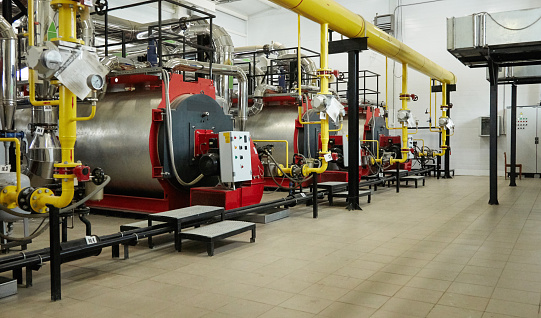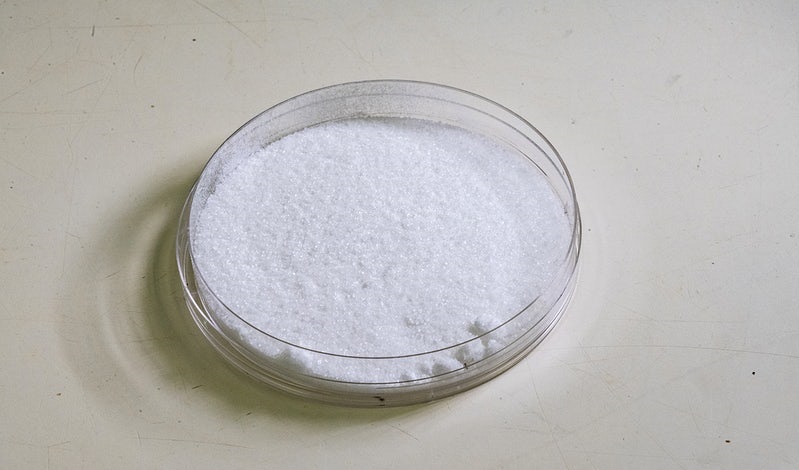
Updated July 27, 2022
Sulfite’s Importance
Sulfite (Sodium Sulfite Na2SO3) has unique properties which allow it to remove oxygen from water. The reaction of sulfite and oxygen creates sulfate.
Dissolved oxygen in boilers can cause rapid corrosion known as pitting. Pitting describes corrosion as the cause of holes to occur in the metal material. These holes can become deep and seriously damage the boiler system.
An oxygen scavenger is a chemical that consumes oxygen through an oxidation-reduction (redox) reaction. Sulfite is the most common type of this.
Sulfite has many advantages such as:
- Low cost
- Safety
- Easy to feed
- Easy to monitor
- Quick reaction with oxygen
- Compatible with other necessary boiler treatment chemicals
To contact a water treatment expert about sulfite, catalyzed sulfite, corrosion, or any other issues click here.
Catalyzed Sulfite

Catalyzed sulfite can accelerate the reaction of the oxygen with sulfite from 10 to 100 times the normal rate. Un-catalyzed sulfite reacts just as quickly at high temperatures, but as the temperatures drop the reaction rate decreases exponentially. Catalyzed sulfite reacts at a very rapid rate at all temperatures.
A catalyst is a chemical that causes an increase in a reaction rate. Cobalt is the most common catalyst used in sulfite. Cobalt can be used in very low concentrations because the catalyst itself is not consumed.
The catalyst becomes inactive at a 9.3 pH or greater, therefore it is extremely important to use a separate mix tank just for the catalyzed sulfite. The cobalt catalyst precipitates as a brown floc that typically settles to the bottom of the batch tank. If you see this material collecting in the batch tank, your sulfite has become regular, un-catalyzed sulfite.
How Do I Monitor Catalyzed Sulfite In A Boiler?

There is a catalyzed form of BJ-10 that can be used just like the normal BJ-10. The dosage rates for the catalyzed version and the normal BJ-10 are interchangeable, and can be determined by the normal boiler calculations and maintaining a residual of 30-60 ppm sulfite in the boiler, and 5-10 ppm sulfite in the deaerator, feedwater, or surge tank.
Analytical technology is always improving, so make sure you are using the most current sulfite test method.
Alternative Chemicals than Sulfite to Consider

Hydrazine, nitrite, and citric acid are alternatives to sulfite/catalyzed sulfite. Hydrazine (N2H4) is dangerous for humans and should not be used in steam boilers. Nitrite (sodium nitrite NaNO2) is a safer chemical option that creates a passivation layer on the steam boiler metal. Nitrite is used to passivate the surface of the steam boiler by adding an oxide layer to the metal. This layer prevents the metal from exposure to the factors that cause corrosion. Lastly, Citric acid (C₆H₈O₇) has become more popular in recent years for its unique properties of being safer and better for the environment. Additionally, there are shorter passivation processing times. Citric acid is similar to nitrite in its role of providing a passivation layer to prevent corrosion in a boiler system.
To find the right chemicals for your specific system, or any other expert water treatment help contact us here.

Matt Welsh
Matt Welsh is the Vice President and Water Consultant at Chardon Labs. He helps consult a wide range of customers utilizing various methods of water treatment, from chemical to chemical-free approaches, large and small applications, and across a wide range of geographical influences. With 20 years of water treatment experience, including a wide range of troubleshooting and service in potable water and non-potable HVAC and industrial applications, he is an expert in water treatment chemistry for cooling towers, boilers, and closed-loop systems.
